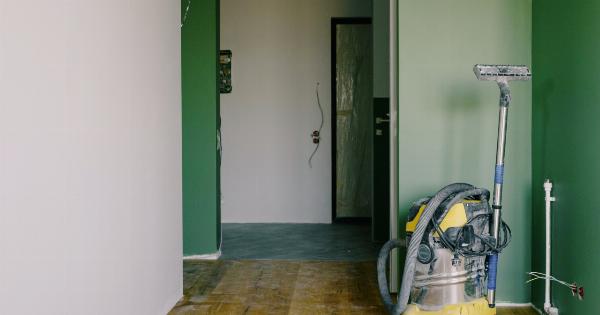Living with allergies can be challenging and frustrating. Allergens present in our homes can trigger various allergic reactions, causing discomfort and affecting our overall well-being.
However, by taking a few simple steps, you can create a low-allergy home and promote a healthier living environment for you and your family. In this article, we will guide you through the process of minimizing allergens and improving indoor air quality. Follow these easy steps to start enjoying an allergy-friendly environment in your own home.
1. Keep Your Home Clean
Regular cleaning is essential to reduce allergens in your home. Dust, pet dander, and pollen can accumulate on surfaces and trigger allergies. Vacuum carpets and rugs frequently using a vacuum cleaner with a HEPA filter to trap small particles.
Dust furniture, shelves, and other surfaces regularly with a damp cloth or a microfiber cloth that can effectively capture allergens.
2. Minimize Clutter
Clutter provides an ideal environment for dust mites and allergens to accumulate. Reduce clutter in your home by keeping things organized and getting rid of unnecessary items. This will make it easier to clean and maintain an allergen-free environment.
3. Use Allergen-Proof Bedding
Your bed can be a haven for dust mites and allergens. Encase your mattresses, pillows, and duvets in allergen-proof covers made of tightly woven fabric.
This will create a barrier that prevents allergens from penetrating and reduces your exposure to them while you sleep.
4. Wash Bedding in Hot Water
Regularly washing your bedding in hot water can help eliminate dust mites and allergens. Use water at a temperature of at least 130°F (54°C) to effectively kill dust mites.
Choose hypoallergenic laundry detergents that are free of fragrances and dyes to avoid additional irritants.
5. Control Humidity Levels
Maintain optimal humidity levels in your home to prevent the growth of mold and dust mites. Aim for a relative humidity between 30% and 50%.
Use a dehumidifier in damp areas like basements and bathrooms, and consider using an air conditioner or fans to reduce humidity during warm weather.
6. Replace Carpets with Allergy-Friendly Flooring
Carpets tend to trap allergens, making it difficult to eliminate them completely. Consider replacing carpets with hard-surface flooring such as hardwood, laminate, or tile.
These types of flooring are easier to clean and do not harbor allergens as much as carpets do.
7. Use High-Efficiency Air Filters
Upgrade your HVAC system with high-efficiency air filters to trap allergens and improve indoor air quality.
Look for filters with a Minimum Efficiency Reporting Value (MERV) rating of 11 or 12, which can effectively capture small particles and filter out allergens.
8. Keep Windows Closed
While it may be tempting to let fresh air into your home, open windows can also bring in allergens such as pollen. Keep windows closed, especially during peak allergy seasons, and rely on your HVAC system for proper ventilation.
9. Avoid Smoking Indoors
Smoking indoors not only releases harmful chemicals but also introduces a range of allergens into the air. Secondhand smoke can trigger allergies and worsen asthma symptoms. Make your home a smoke-free zone to maintain a low-allergy environment.
10. Regularly Replace Air Filters and Clean Vents
To maintain the efficiency of your HVAC system, it is important to regularly replace air filters and clean vents. Clogged filters and dusty vents can circulate allergens throughout your home.
Follow the manufacturer’s instructions for filter replacement and use a damp cloth to clean vents and ducts.
By following these easy steps, you can significantly reduce allergens in your home and create a low-allergy environment. Minimizing allergens and improving indoor air quality will promote a healthier and more comfortable living space for everyone.
Take control of your surroundings and enjoy the benefits of a low-allergy home.




























